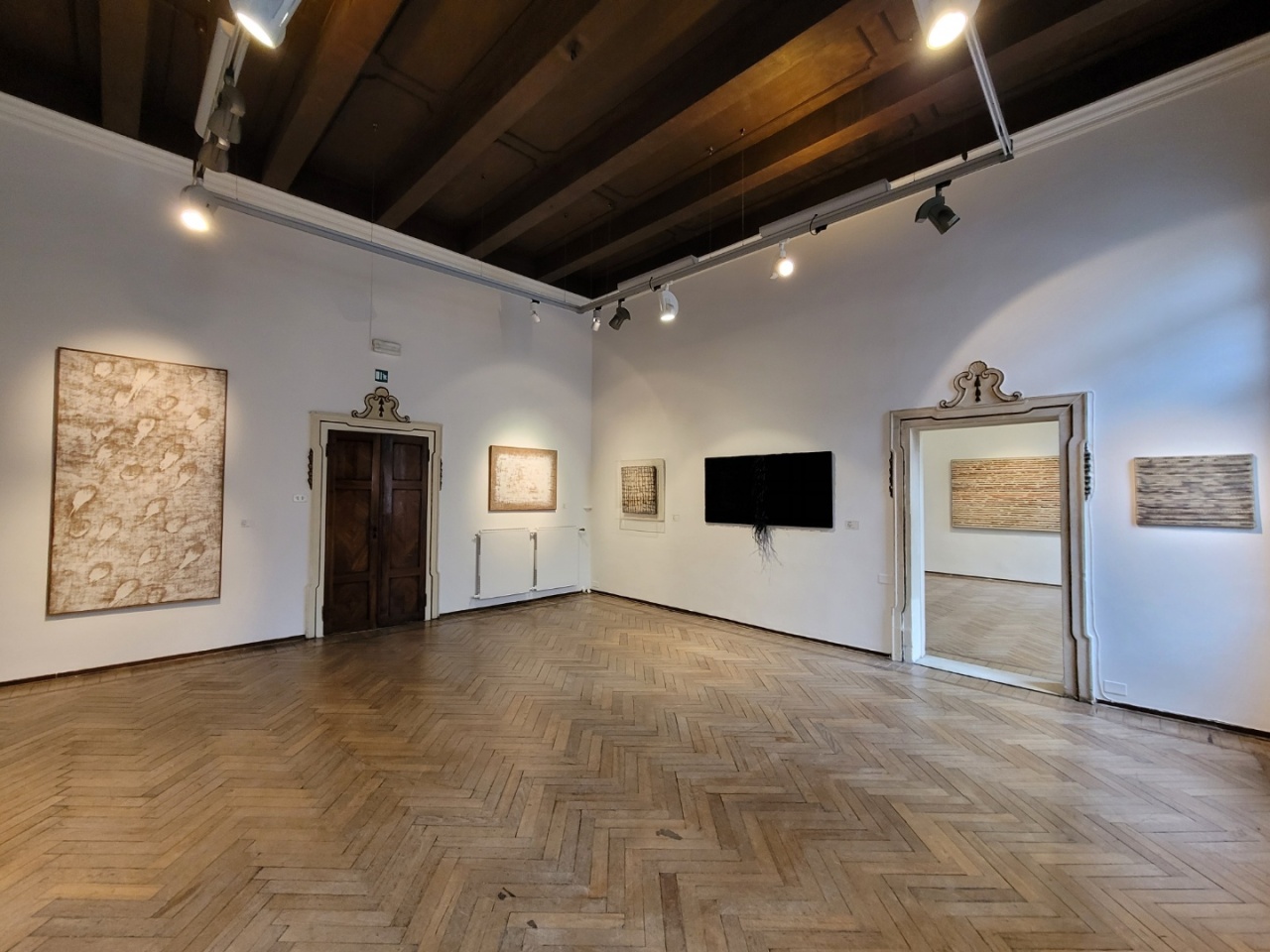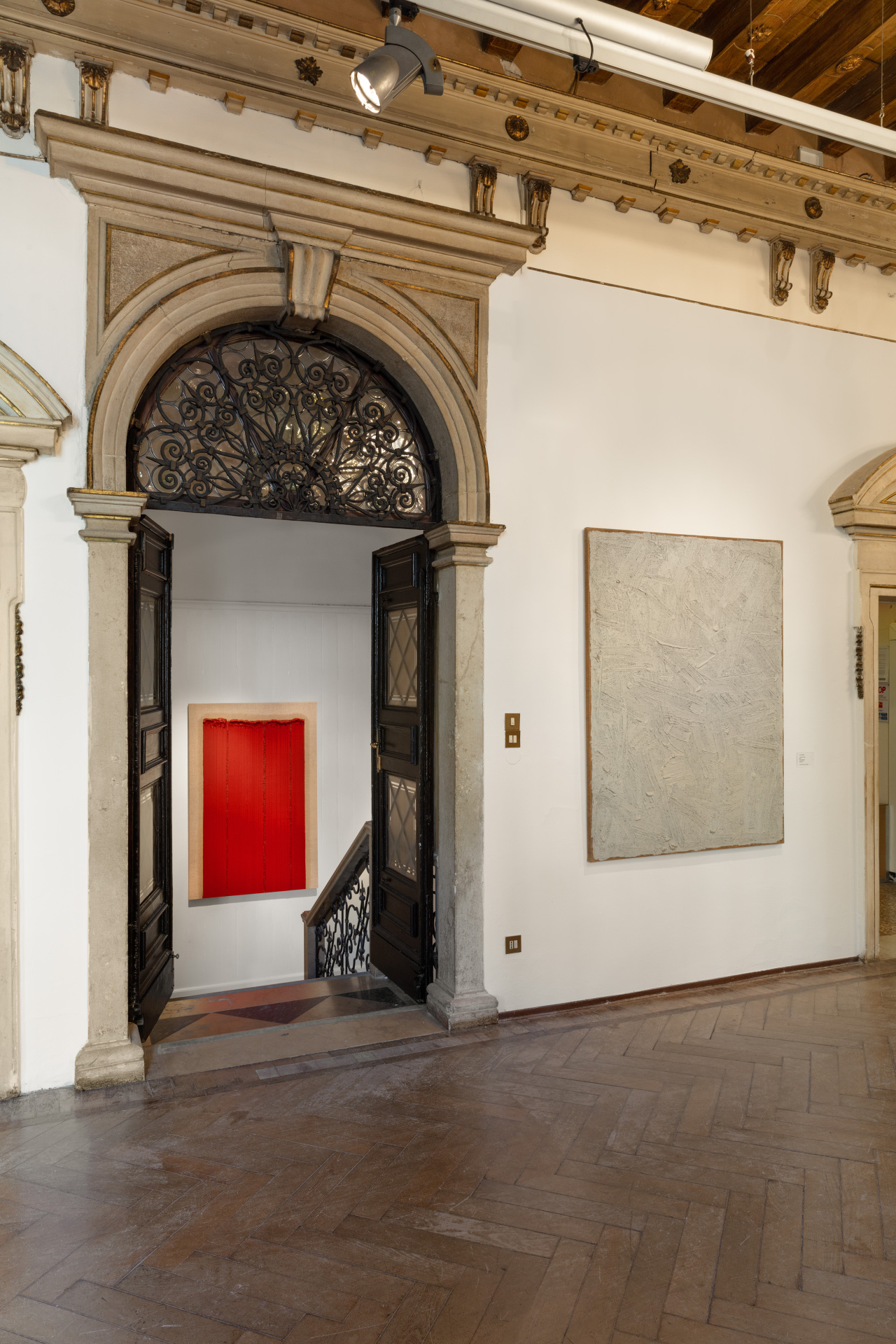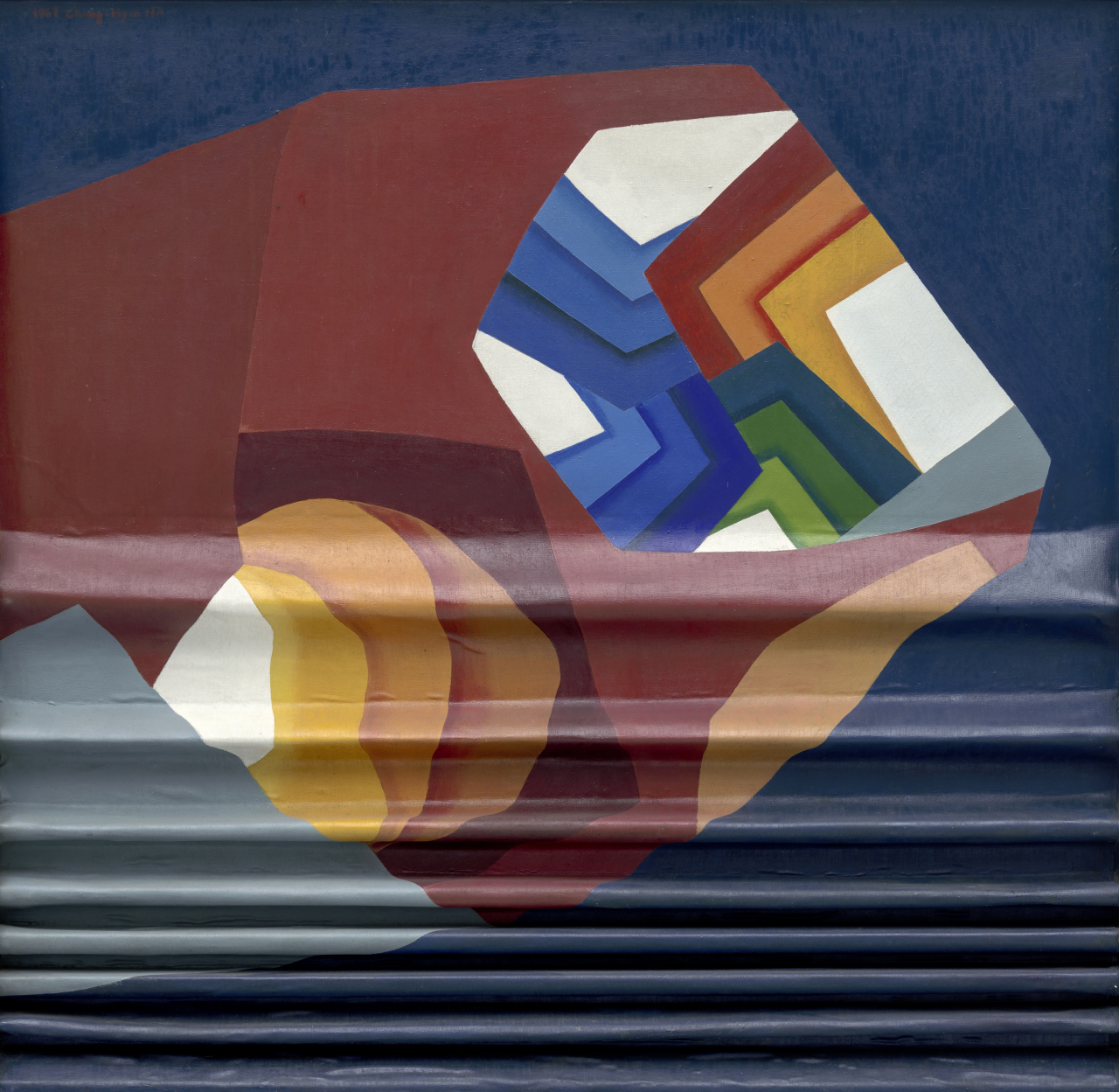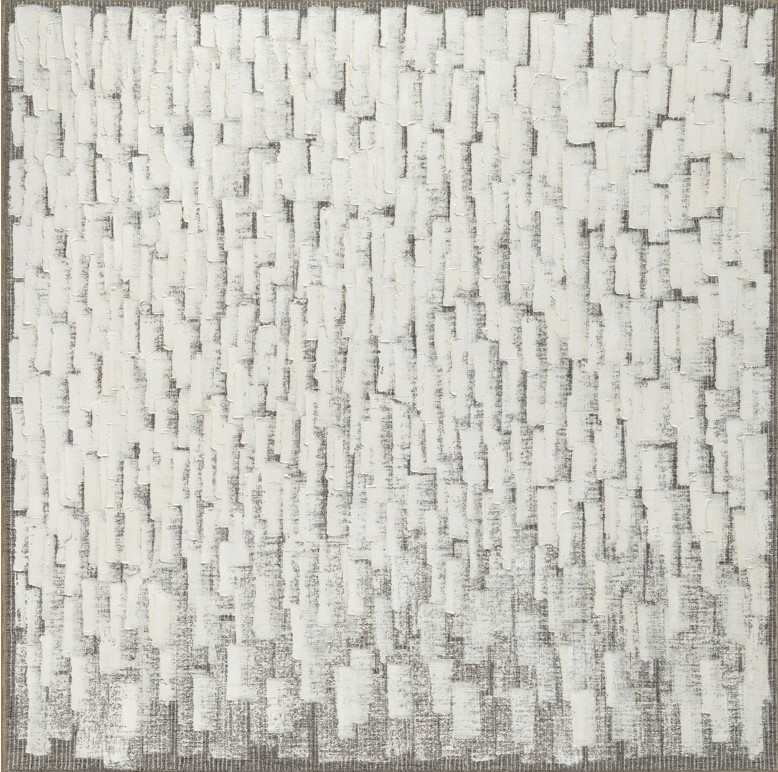
Installation view of Ha Chong-hyun’s exhibition at Palazzetto Tito in Venice, Italy (Park Yuna/The Korea Herald)
VENICE, Italy – Coinciding with the Venice Biennale 2022, a retrospective of Korean contemporary artist Ha Chong-hyun is on display at Palazzetto Tito, a historical palace located in Dorsoduro, southeastern Venice. The exhibit includes rarely-seen early paintings with creative experimentation from the renowned 86-year-old artist.
The retrospective is a collateral event of the 59th Venice Biennale and is held jointly by La Fondazione Bevilacqua La Masa, the Seoul-based Kukje Gallery and the New York-based Tina Kim Gallery.

Installation view of Ha Chong-hyun’s exhibition at Palazzetto Tito in Venice, Italy (Kukje Gallery, Tina Kim Gallery)
The exhibition, under the curatorial direction of renowned curator Kim Sun-jung, aims to shed light on Ha’s 60-year career. Ha is one of the few pioneers of abstract art in Korea, and is known as a leading member of the “dansaekhwa” movement -- the first contemporary art trend in Korea after the country’s liberation from Japanese colonial rule. “Dansaekhwa” refers to monochrome painting.
It is not surprising that Kim has selected works from the artist’s signature “Conjunction” series that he has stubbornly pursued since the early 1970s. Interestingly, the curator also highlighted the little-known path of an artist who was at the forefront of Korea’s contemporary art scene with the 1967-1968 “Naissance” series, which highlights traditional elements. Also included is the avant-garde 1967 painting “White Paper on Urban Planning,” which addresses urbanization and the changing physical landscape of Seoul.
In particular, “White Paper on Urban Planning” touches on the radical transformation that South Korea went through during the 1960s under the autocratic rule of President Park Chung-hee from 1961 to 1979.

“White Paper on Urban Planning” by Ha Chong-hyun created in 1967 (Courtesy of the artist and Kukje Gallery)
"In ‘White Paper on Urban Planning,’ the upper half of the canvas is flat, but the lower half is literally folded, physically wrinkled like waves. The folds allude to the forced compression associated with the rapid urbanization and industrialization of Korea,” Kim explained.
Kim’s special tie with Ha dates back to 1993, when she first came to the Venice Biennale and saw his art at the small exhibition allocated to the Italian Pavilion at the 45th Venice Biennale - two years before the Korean Pavilion was established in 1995 at the 46th Venice Biennale.
At this year’s Biennale, two Koreans -- Ha and Hanji artist Chun Kwan-young -- are featured in the Biennale’s collateral exhibitions, taking place alongside the prestigious contemporary art event.
“It is fantastic to see how Korean art has grown in stature over the past decades. There were not many satellite exhibitions of Korean artists during the Biennale back in the day,” Kim noted.
Showcased at the exhibition is the artist’s historic 1973 work “Work 73,” in which Ha drew attention to the back of the painting by attaching barbed wire onto its rear supports. Kim said “Work 73” is a critical piece in Ha’s career because the work later developed into the “Conjunction” series.

“Conjunction 21-73” by Ha Chong-hyun, created in 2021(Courtesy of the artist and Kukje Gallery)
Ha’s signature “Conjunction” series overturned the concept of painting and canvas. He made his own canvas out of hemp cloth, breaking away from the typical choices of linen and cotton. He pushed thick layers of paint from the back side of the burlap so that the paint oozed through, creating a unique texture on the front. Ha called this technique “baeapbeop,” which literally means “back-pressure technique.”
Ha’s latest paintings, created since 2020, are on display in the last room. He produced them by pressing white paint through the weave of the fabric support that was painted black. He then worked on the surface further with other single colors.
“I like his latest paintings as well. Ha has experimented with his art throughout his career,” Kim said.
Ha co-founded the Avant Garde Association in 1969, comprised of art critics and 12 artist members, and led the association until 1973. The group experimented with space by producing site-specific installations using mundane objects such as barbed wire, plaster, timber, metal springs and newspaper. These experimental artworks later became a cornerstone in his career.
By Korea Herald correspondent Park Yuna
(yunapark@heraldcorp.com)









